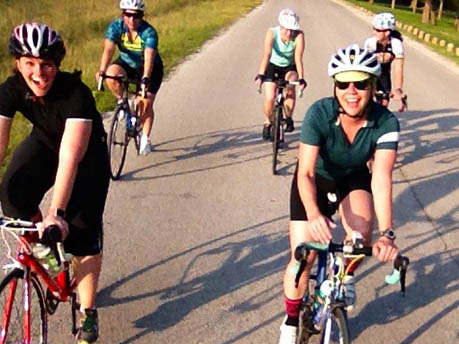stretching a ball out for first down
Question
Let's say a ball carrier on a play jumps over the offensive line, stretches the ball over the first down marker, then intentionally pulls the ball back to his body as his forward progress is being stopped. Is the forward progress awarded to where the player stretches the ball to, or is the forward progress awarded to where the player who brings the ball back to his body?
I am curious because I saw Drew Brees on a fourth down play against the Lions leap over the line, stretch the ball over the first down marker, then pull the ball back to his body as he was being tackled. I contend that his forward progress should have been where he intentionally pulled the ball back to because the ball was not forced back by a defender, but it was brought back to Drew Brees' body. I think the referees interpreted the rule as if he had scored a touchdown, where the moment the ball crosses the goal line, a touchdown is awarded. But for a first down, I believe forward progress may be awarded differently. Could you answer my question and tell me if the refs made a mistake? Thanks, Dan Sadler
Answer
Dan
Thank you for your question about Forward Progress. This is a rather common question and I believe that due to the simplicity of its concept people try to make it more complicated that it really is. I will address your question and then take you through an analysis of the rule on Forward Progress. The concept is the same at all three levels of football (NFL, College and High School/Youth). Forward progress is treated the same on all plays whether there is a goal line, line to gain or otherwise. The ball is placed at the forward most point when the runner is down or the ball is declared dead by rule.
You clearly understand forward progress when the goal line is involved - just know it is the same when the line to gain is involved.
Forward progress is a term indicating the end of advancement by the ball carrier and the notation of the forward point of the ball at the end of that advancement.
Your first question is: "Is the forward progress awarded to where the player stretches the ball to, or is the forward progress awarded to where the player who brings the ball back to his body?" The Answer is, the proper forward progress spot is the forward most point of the ball when the bal was declared dead by rule. In your play the runner (or ball carrier)leaped over the line of scrimmage, stretch the ball forward over the line to gain. Thus forward progress spot is the location of the where where it was stretched out, thus achieving the line to gain for a first down.
The runner's forward progress is stopped when he is not any longer moving forward.
You indicate that you "believe forward progress may be awarded differently" for first downs as opposed to touchdowns" - this is not correct.
Your belief is a very common misconception so don't feel bad about that. But, it is a misconception. Forward progress is treated the same on all plays. (This is getting overly technical for your question, but Under the NCAA rule interpretations for the 2011 season forward progress involving the pylon at the goaline has a slight variation to the above, but I am only mentioning this as there may be reseachers in the future reading this response.) So you are not confused Forward progress is treated the same on a TD as it is on achieving the line to gain.
In your play the officials were correct and ruled the play correctly. They did not make a mistake.
I hope this answered your specific questions. Below I will take you through the rule or concept of forward progress using the pre-2011 NCAA and Federation rules which are foundationally the same as the NFL rule.
Most forward progress plays involve a knee down or foot out of bounds, you play is of a player on top of or in a pile where he has lost the ability to advance further. The forward progress spot is the forward most point of the ball where it was when the ball became dead (i.e. when the runner's knee touches the ground, where he is down by contact [NFL Rule] or where a stretched out prone runner's body is on top of a pike while his body is controled or piled on by a defender, etc). The ball is not spotted where the knee is down or the foot steps out of bounds, but rather the spot of the ball at the instant the ball became dead. Any additional stretching or reaching the ball forward after that instant is ignored.
Forward progress appears simple in concept ?the forward most point of the ball when the play is declared dead. This simple concept is one of the most inconsistently applied and misunderstood rules of the game. 揊orward progress? one of the most significantly evolved rules, was first addressed in 1906 later edited in 1932, 1973 and again in 1988 providing the current definition.
The forward progress rules are utilized on most every play. However, officials frequently misapply them. The reason officials tend to misjudge this call is because they do not use the ball as their reference point. It is not the position of the runner抯 foot or the runner抯 knee. Rather, it is the position of the forward most point of the ball when the play becomes dead by rule. It is this dead ball spot that determines forward progress.
Under the college rules: Forward progress is a term indicating the end of advancement by the runner or airborne pass receiver of either team and applies to the position of the ball when it became dead by rule. (NCAA Rule 2-8-2). Hence, the reference point is the ball. Officials must note the position of the ball when the runner or airborne receiver is no longer moving forward.
Under the high school rules: Forward progress is the end of advancement of a runner toward the opponent抯 goal and determines the dead ball spot. When an airborne player makes a catch, forward progress is the furthest point of advancement after he possesses the ball if contacted by a defender. (Federation Rule 2-15-1, 2). Again, the reference point is the position of the ball when the runner is no longer moving forward toward his opponent抯 goal line. The Federation rule reference the 揹ead ball spot?which implies the forward most point of the ball. (2-40-3).
The rule is in part, objective ?not open to interpretation. The official makes an observation and marks the spot at the location determined by the exact instant the ball becomes dead by rule. You see it and go to the spot. Mark the forward tip of the ball if the ball was carried with the length axis of the ball parallel to the sideline. Otherwise mark the forward most part of the ball.
Application of the forward progress rules also requires a subjective approach. This is when officials are called upon to use their judgment and make a decision that the ball carrier is no longer advancing toward his opponent抯 goal line. Is the runner moving forward, sideways, or backward? If the runner抯 momentum is no longer going forward his progress has stopped. If the runner抯 movement is solely sideways toward the sideline his forward progress has stopped.
Although the rule no longer uses the language: in the grasp of an opponent? philosophically it is implied through tradition. Both high school and college rules deem the ball dead and forward progress stopped when the ball carries is 揾eld so his (forward advancing) progress is stopped?(Federation Rule 4-2-2-a; NCAA Rule 4-1-3-a) [NFL rules refere to the spot where thr runner is down by contact]. NCAA Rule 4-1-3-a states that the ball becomes dead 搘hen the runner is so held that his forward progress is stopped.?Officials must determine if the opponent of the runner has sufficiently held or grasped the runner so as to have stopped his forward movement. This action is what kills the play not the whistle. A quick whistle can get an official into trouble, but too much of delayed whistle can also cause problems. A quick whistle may lead to an inadvertent whistle. A slow whistle may allow for the ball to become loose or a player to become injured, etc. Therefore, officials must know when the forward movement has stopped.
A runner who is running sideways and is grasped or held by an opponent is no longer advancing the ball forward. Likewise, a ball carrier that is being pushed backward by an opponent is no longer advancing the ball forward and by rule the ball is dead. In situations where a runner is hit, knocked backward but not held in the opponent抯 grasp, the runner may still advance the ball forward. The reason forward progress is not stopped is because the runner was not grasped. An airborne receiver who catches the ball and then is driven backward by an opponent and the ball then declared dead will be awarded the forward progress spot at the place where he received the pass. When a runner steps out of bounds the forward progress spot is where the ball was when the runner stepped out of bounds. On plays where the runner/airborne receiver stretched out the ball (before being downed) at the sideline, the forward progress spot is the foremost point of the ball where it intersects the sideline.
On every play officials must know when the ball becomes dead. For forward progress purposes the ball becomes dead when: the runner is out of bounds; the runner is held so his forward progress is stopped; when any part of the runner抯 body other than his hand or foot touches the ground; inadvertent whistle or when the runner抯 helmet comes off. Additionally, under the NCAA rules when the airborne pass receiver is so held and subsequently carried and prevented from returning to the ground.
Marking Forward Progress:
Forward progress is not the point where the runner抯 knee first touches the ground or where the runner抯 foot goes out of bounds or where the ball is "pulled back" to by the runner. The reference point is the BALL (usually carried at the shoulder/chest or where out stretched to).
Officials are to mark forward progress by 搒quaring up?from the sideline and align their forward foot with the forward most part of the ball. Common sense is applied not to give an advantage to a team, officials try to start a new series of downs (after a change of possession) on a yard line. This makes it easier to see the line to gain, to fo measurements on first downs and march off penalties. Contrary to some officials?practices, this does not mean an official always marks the ball on a yard line for each down. Mark progress where the ball lies.
There are times when it is extremely difficult to determine with precision where the dead ball spot is (e.g. run plays up the middle into a pile). In this instance, the officials must watch the runner. See where the ball is being carried (i.e. tucked in one arm at his rib cage, held with both hands in front chest high, etc.) Remember, the ball is not carried at the knees or thigh or at the waist level. Use the runner抯 chest and shoulders as a reference point when you have lost sight of the ball and it is not loose. However on plays where the ball is clearly out stretched in advance of the runner's body and is progress is not completely stopped make the spot of the ball where it was stretched out to. Officials will mark forward progress by moving parallel to the runner then square up, pinch in to the location of the forward progress spot as necessary. The official will indicate the spot by standing with both feet together, using your forward most foot as the mark.
Defesive back.
Coverage


